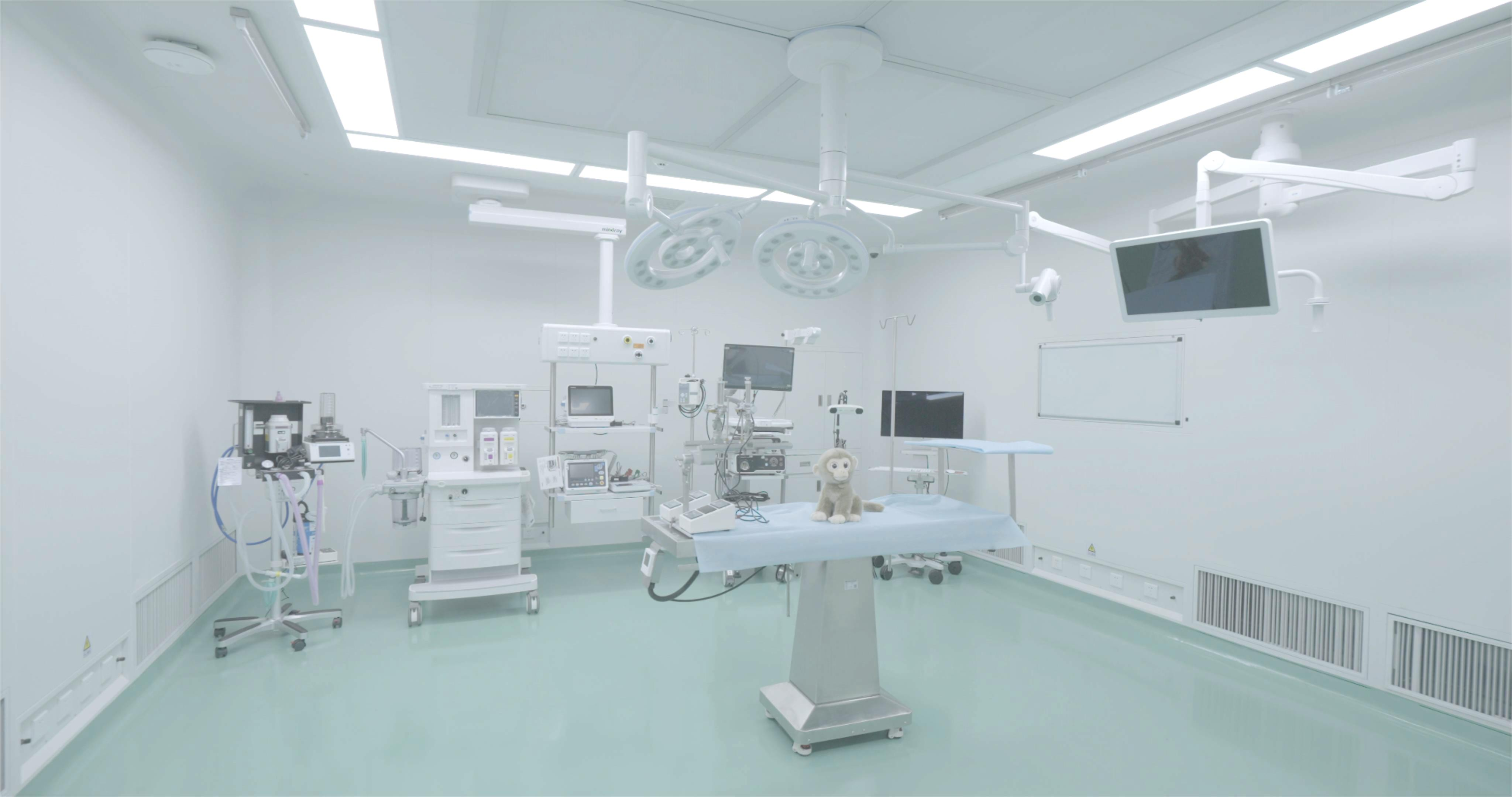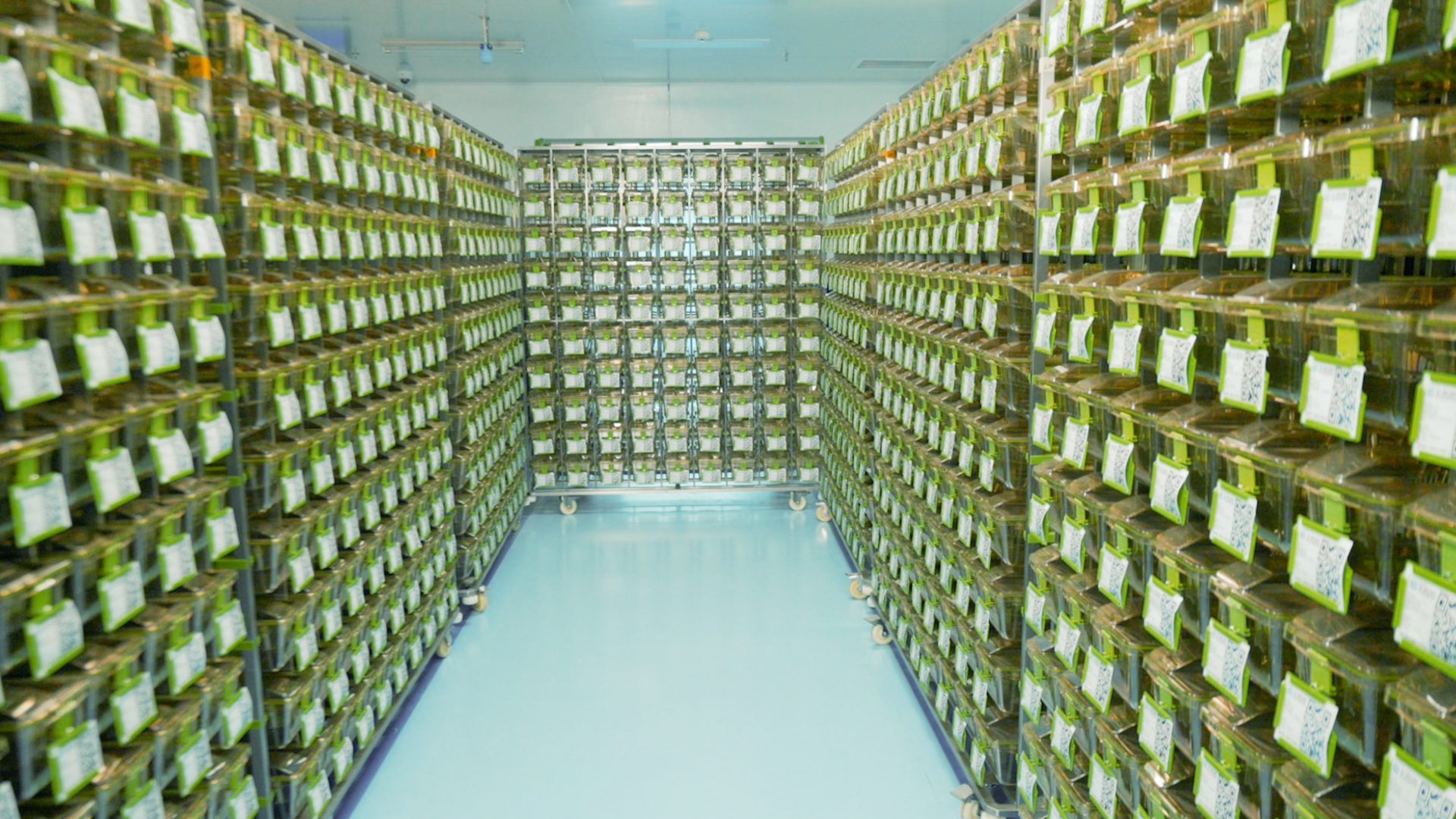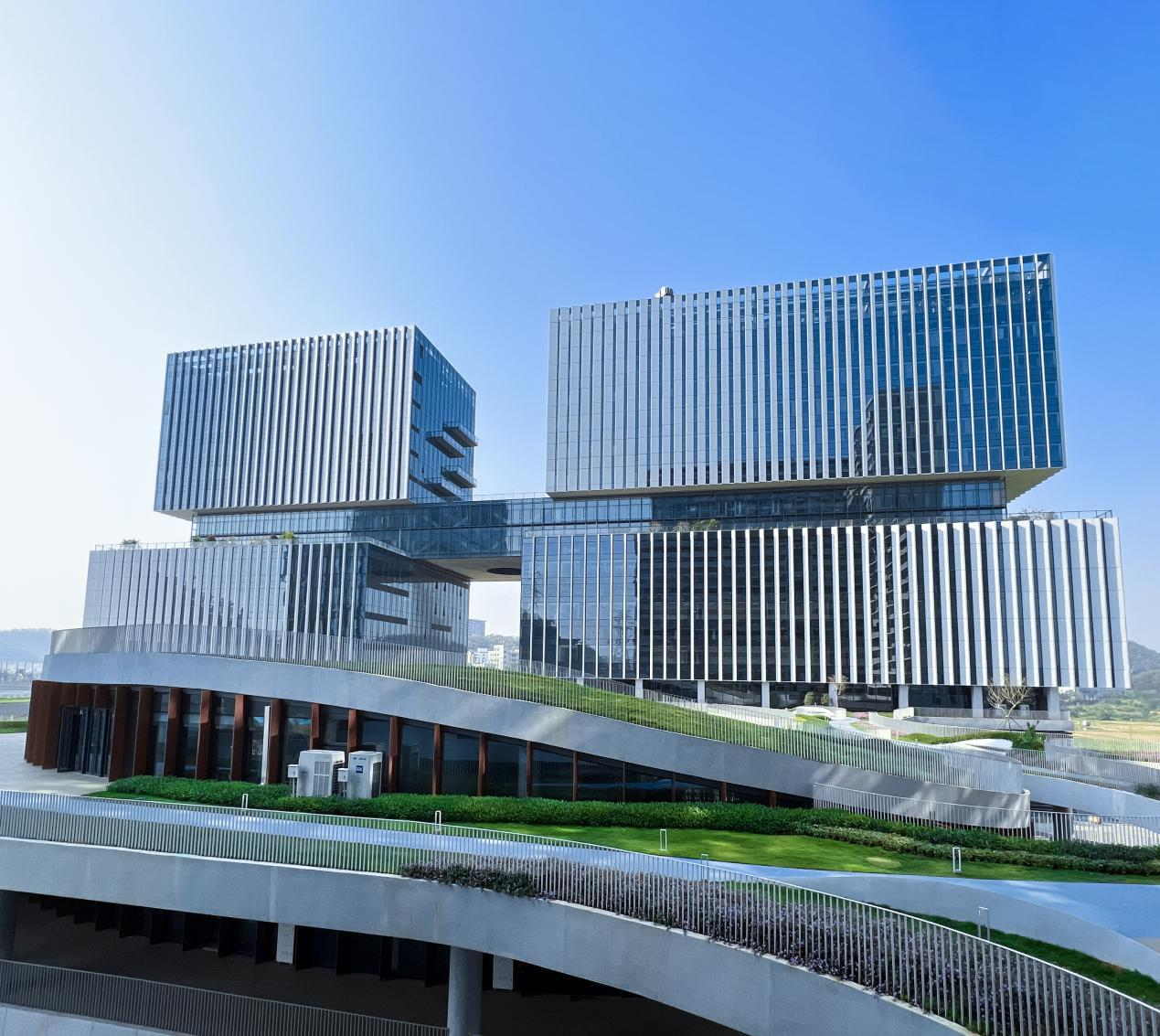深圳市脑解析与脑模拟重大科技基础设施(脑设施)于 2020 年获深圳市发展和改革委员会批复,由中国科学院深圳先进技术研究院牵头建设,为光明科学城启动区的重点建设项目。脑设施总建筑面积5万余平方米,包含脑编辑、脑解析和脑模拟三大技术模块,具备跨物种动物模型的制备以及跨尺度神经结构功能解析的能力。
依托中国科学院深圳先进技术研究院脑认知与脑疾病研究所(脑所)和深港脑科学创新研究院(深港脑院),脑设施已组建了三大科学部(非人灵长类实验动物、啮齿类实验动物、大设备)和九大技术平台,致力于支撑深圳综合性国家科学中心和粤港澳大湾区国际科技创新中心的建设,将为脑科学与类脑智能领域的基础和临床前研究、产业生态打造提供全面的技术支撑,并实现信息和资源的高效共享。
Profile of Brain Science Infrastructure
The Essential Scientific Research Infrastructure for Brain Dissection and Brain Simulation, Shenzhen (Brain Science Infrastructure), led by the Shenzhen Institutes of Advanced Technology of the Chinese Academy of Sciences (SIAT), was approved by the Shenzhen Development and Reform Commission in 2020 and is a key construction project in the startup area of Guangming Science City. The Brain Science Infrastructure has a total construction area of more than 50,000 square meters, contains three major technical modules: brain editing, brain dissection and brain simulation, which works together to provide the abilities of cross-species model construction and pan-scale dissection of neuronal structure and function.
Based on the Brain Cognition and Brain Disease Institute(BCBDI) of Shenzhen Institutes of Advanced Technology of the Chinese Academy of Sciences (SIAT) and Shenzhen-Hongkong Institute of Brain Science, the Brain Science Infrastructure has built up three major scientific divisions (Division of Non-human Primate Research, Division of Rodent Research and Division of Neuroscience Research) and nine technical platforms, which are dedicated to support the construction of the Shenzhen comprehensive national science center and the Guangdong-Hong Kong-Macao Greater Bay Area international science and technology innovation center, and will provide comprehensive technological support for the basic and preclinical research in the field of brain sciences and brain-like intelligence, and the creation of industrial ecology, as well as realizing the efficient sharing of information and resources.
科学部介绍(SCIENCE DIVISIONS)
非人灵长类实验动物科学部
主要功能为饲养、繁殖实验猴以及开展脑科学相关的研究。面积20000平方米,规划饲养狨猴、食蟹猴以及恒河猴共计2000只。包含手术室10间、大动物行为学实验室60间,另设有检验检测平台、基因编辑平台以及表型分析平台等。
具备多种疾病模型制备能力,成功制备了自闭症、阿尔兹海默症等多种重大脑疾病模型猴。
Division of Non-Human Primate Research
The main function of this division is to house and breed laboratory monkeys and to conduct brain science-related research.With an area of 20,000 square meters, it is planned to keep up to 2,000 marmosets, cynomolgus monkeys and rhesus monkeys.It includes 10 operating rooms, 60 laboratories for large animal behavior, and platforms for testing, gene editing, and phenotyping, capable of preparing a variety of major brain-related disease models such as autism and Alzheimer's disease.
啮齿类实验动物科学部
主要功能为饲养、繁殖实验鼠,以及开展脑科学相关的研究。面积15000平方米,屏障外自动化率实现90%以上,SPF大小鼠笼位数将近3万笼,无菌小鼠隔离器70 台,可饲养无菌小鼠约 1000 笼。
具备啮齿类动物微生物检测能力,提供跨物种基因编辑、行为学分析及神经记录等先进技术服务。
Division of Rodent Research
The Division of Rodent Research is mainly responsible for breeding and raising laboratory mice and rats, and conducting research related to brain science.
With an area of 15,000 square meters and an automation rate of over 90% outside the barrier, the capacity for SPF mice and rats is nearly 30,000 cages, and there are 70 sterile mouse isolators with a capacity of about 1,000 cages. The division is also equipped with technologies related to laboratory animals, such as rodent micro-organism testing, cross-species gene editing, behavioral analysis and electrophysiological analysis technology.
大设备实验科学部
具备跨物种、全尺度神经科学研究的主要设备和技术,主要功能为建立全尺度、动静态观察、从实验动物到人的全身连接图谱的结构与功能解析平台,实现对正常和疾病大脑及全身结构与功能的精准解析。
建设的平台主要包括:神经影像平台、光学成像平台、电镜平台、生化平台、质谱平台、电生理平台、神经调控平台、行为分析平台以及类脑器件平台等。
Division of Neuroscience Research
The Division of Neuroscience Research is equipped with major equipment and technologies for cross-species and full-scale neuroscience research.
The main function is to establish a full-scale, dynamic and static observation platform to analyze the structure and function of the whole-body connectivity mapping from experimental animals to human beings, so as to realize the precise analysis of normal and diseased brain and whole-body structure and function.
The platforms to be built include: neuroimaging platform, optical imaging platform, electron microscopy platform, biochemical platform, mass spectrometry platform, electrophysiology platform, neuromodulation platform, behavioral analysis platform and brain-like device platform.
建设目标(Construction Objectives)
建成立足深圳、服务全国、辐射全球的脑科学研究大型科技基础设施,为实现建制化科研和承接国家重大科研计划提供技术支撑和平台保障。以脑设施和深港脑院为创新源动力,带动光明科学城脑科学与类脑智能未来产业的生态建设,探索科技成果转化的新机制新路径,实现融合“从0到1”的先导性探索、“从1到N”的连续性创新、“从 N 到N+1”的应用突破。
Construction Objectives
To build a large-scale scientific and technological infrastructure for brain science research based in Shenzhen, serving the whole country and radiating globally, and to provide technological support and platform guarantee for the realization of institutional scientific research and the undertaking of major national scientific research plans.
Take the brain facility and Hong Kong Brain Institute as the source of innovation, drive the ecological construction of brain science and brain-like intelligence industry in Guangming Science City, explore new mechanisms and paths for the transformation of scientific and technological achievements, and realize the integration of the pioneering exploration of "0 to 1", continuous innovation of "1 to N", and application breakthroughs of "N to N+1".
Construction Objectives
To build a large-scale scientific and technological infrastructure for brain science research based in Shenzhen, serving the whole country and radiating globally, and to provide technological support and platform guarantee for the realization of institutional scientific research and the undertaking of major national scientific research plans.
Take the brain facility and Hong Kong Brain Institute as the source of innovation, drive the ecological construction of brain science and brain-like intelligence industry in Guangming Science City, explore new mechanisms and paths for the transformation of scientific and technological achievements, and realize the integration of the pioneering exploration of "0 to 1", continuous innovation of "1 to N", and application breakthroughs of "N to N+1".
任务目标(Mission and Objectives)
加速脑疾病治疗药物、新型诊断和干预方法研发、推动类脑智能等技术的跨越式发展。用“设施+人才+技术”带动“脑与类脑产业”发展,实现原始创新、资源共享。
Mission and Objectives
Accelerate the iterative cycle of research and development of therapeutic drugs for brain diseases, new diagnostic and intervention methods, and promote the leapfrog development of brain technology.Driving the development of "brain industry" with "facilities + talents + technology", realizing original innovation and resource sharing.
开放共享(Open Sharing)
面向国内外开放,通过预约及定制式服务模式,为脑科学与类脑智能领域的基础研究、医疗健康、认知教育的源头创新,产业生态打造与民生服务,提供全面的技术支撑,实现信息和资源的高效共享。面对社会公众开放,成为国家生命科学研究重要的教学实践中心及科普平台。
Open Sharing
Open to both domestic and international researchers, it provides comprehensive technical support and efficient sharing of information and resources through reservation and customized service mode for basic research in brain science and brain-like intelligence, source innovation in healthcare and cognitive education, industrial ecology building and people's livelihood services.It will be open to the public and become an important teaching practice center and a platform for science popularization for national life science research.








